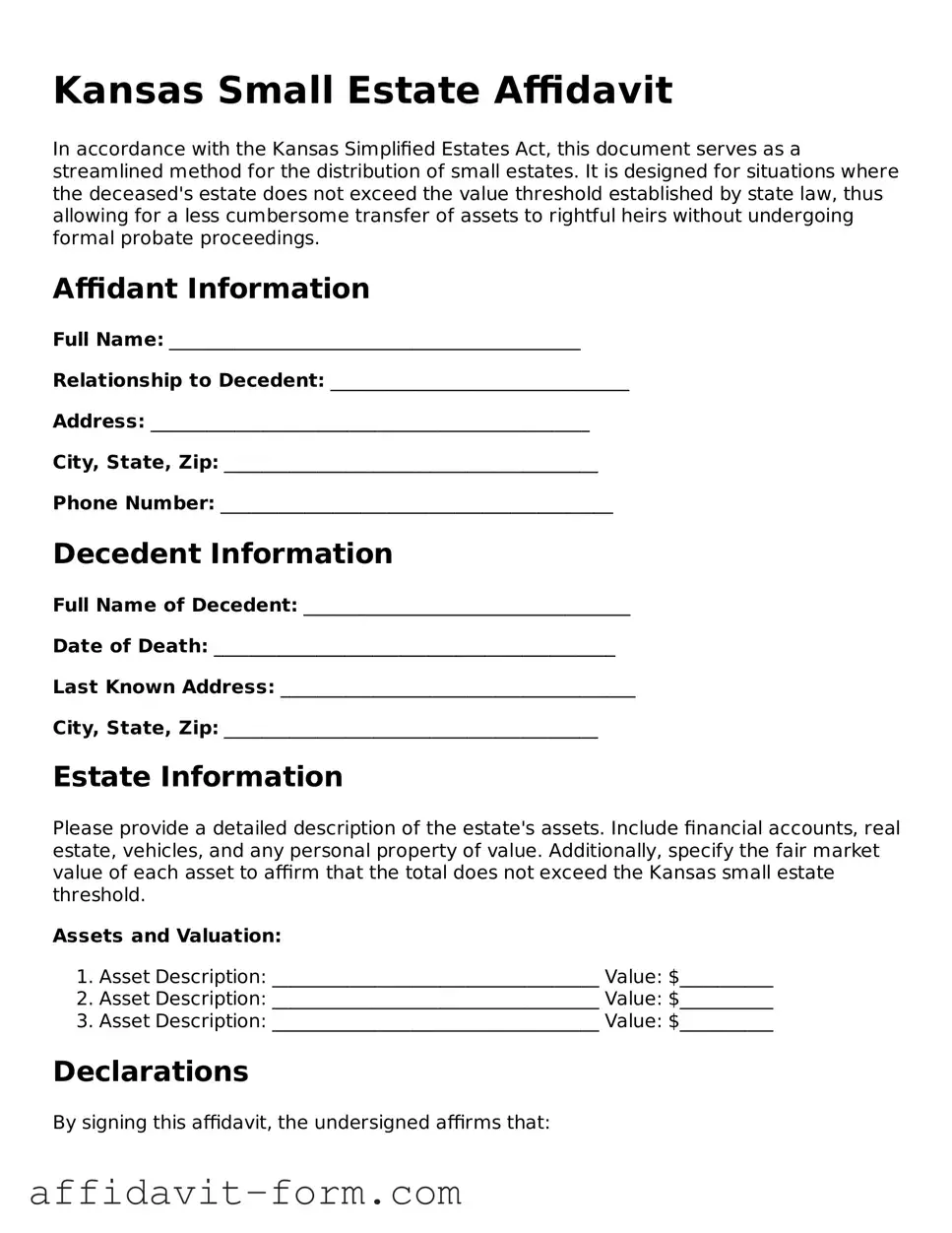Kansas Small Estate Affidavit
In accordance with the Kansas Simplified Estates Act, this document serves as a streamlined method for the distribution of small estates. It is designed for situations where the deceased's estate does not exceed the value threshold established by state law, thus allowing for a less cumbersome transfer of assets to rightful heirs without undergoing formal probate proceedings.
Affidant Information
Full Name: ____________________________________________
Relationship to Decedent: ________________________________
Address: _______________________________________________
City, State, Zip: ________________________________________
Phone Number: __________________________________________
Decedent Information
Full Name of Decedent: ___________________________________
Date of Death: ___________________________________________
Last Known Address: ______________________________________
City, State, Zip: ________________________________________
Estate Information
Please provide a detailed description of the estate's assets. Include financial accounts, real estate, vehicles, and any personal property of value. Additionally, specify the fair market value of each asset to affirm that the total does not exceed the Kansas small estate threshold.
Assets and Valuation:
- Asset Description: ___________________________________ Value: $__________
- Asset Description: ___________________________________ Value: $__________
- Asset Description: ___________________________________ Value: $__________
Declarations
By signing this affidavit, the undersigned affirms that:
- All information provided herein is accurate and complete to the best of their knowledge.
- The estate’s total value does not exceed the threshold set forth by Kansas law.
- There are no disputes among potential heirs regarding the distribution of the estate.
- They will distribute the assets of the estate according to Kansas law and the wishes of the decedent if known.
Signature of Affiant: _______________________________ Date: ____________
This document must be notarized to ensure its validity. Please bring this completed form to a qualified notary public.
Notary Information
State of Kansas
County of ________________________
Subscribed and sworn to (or affirmed) before me on this ___ day of _______________, 20___, by (name of affiant) _______________________________________, who is personally known to me or has produced _________________________________________ as identification.
Notary Signature: ___________________________________
Seal:
